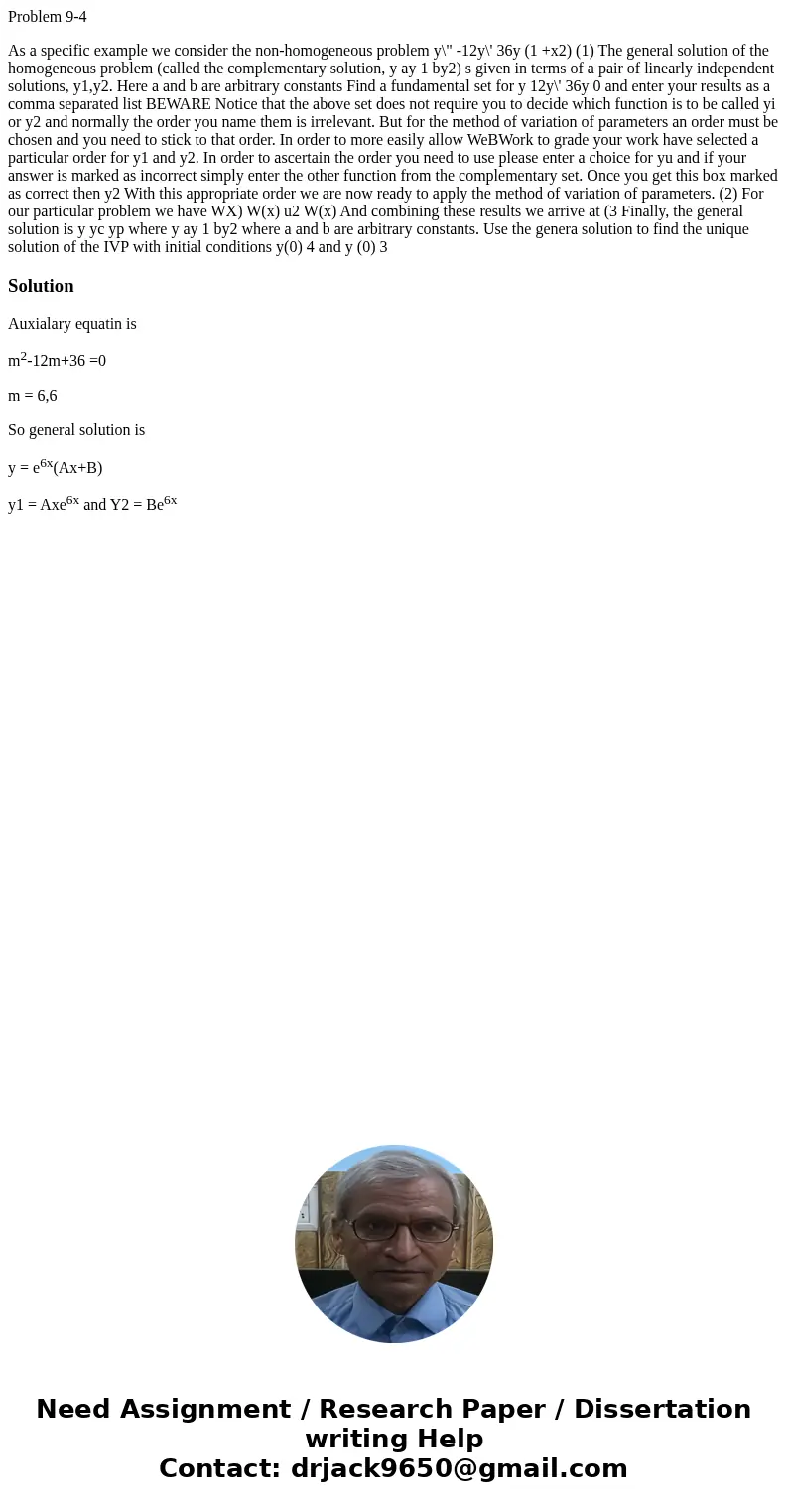Problem 94 As a specific example we consider the nonhomogene
Problem 9-4
As a specific example we consider the non-homogeneous problem y\" -12y\' 36y (1 +x2) (1) The general solution of the homogeneous problem (called the complementary solution, y ay 1 by2) s given in terms of a pair of linearly independent solutions, y1,y2. Here a and b are arbitrary constants Find a fundamental set for y 12y\' 36y 0 and enter your results as a comma separated list BEWARE Notice that the above set does not require you to decide which function is to be called yi or y2 and normally the order you name them is irrelevant. But for the method of variation of parameters an order must be chosen and you need to stick to that order. In order to more easily allow WeBWork to grade your work have selected a particular order for y1 and y2. In order to ascertain the order you need to use please enter a choice for yu and if your answer is marked as incorrect simply enter the other function from the complementary set. Once you get this box marked as correct then y2 With this appropriate order we are now ready to apply the method of variation of parameters. (2) For our particular problem we have WX) W(x) u2 W(x) And combining these results we arrive at (3 Finally, the general solution is y yc yp where y ay 1 by2 where a and b are arbitrary constants. Use the genera solution to find the unique solution of the IVP with initial conditions y(0) 4 and y (0) 3Solution
Auxialary equatin is
m2-12m+36 =0
m = 6,6
So general solution is
y = e6x(Ax+B)
y1 = Axe6x and Y2 = Be6x

 Homework Sourse
Homework Sourse